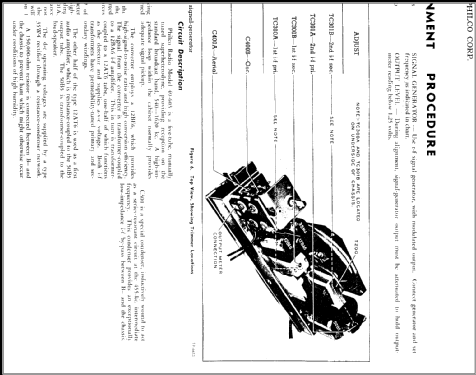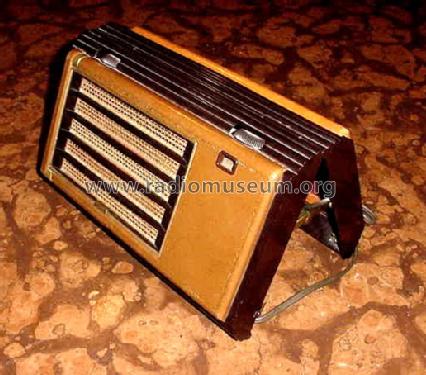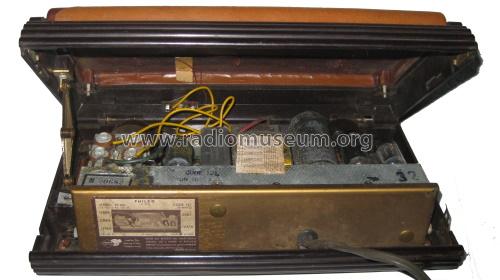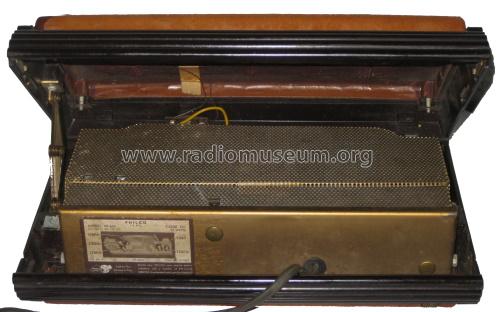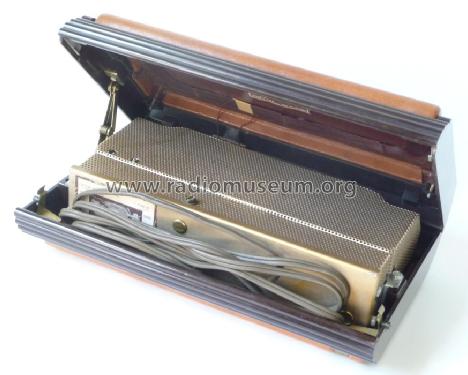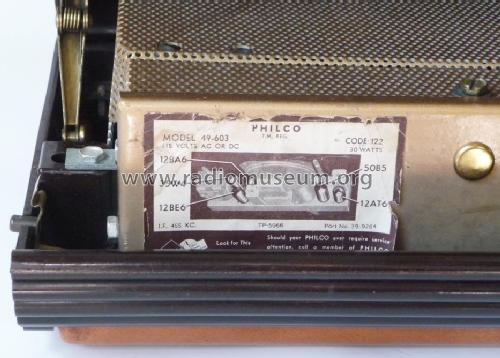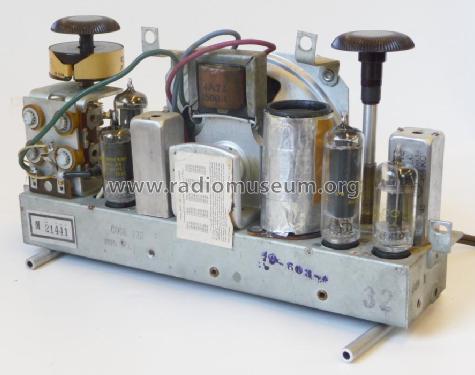- País
- Estados Unidos
- Fabricante / Marca
- Philco, Philadelphia Stg. Batt. Co.; USA
- Año
- 1949
- Categoría
- Radio - o Sintonizador pasado WW2
- Radiomuseum.org ID
- 50941
Haga clic en la miniatura esquemática para solicitarlo como documento gratuito.
- Numero de valvulas
- 5
- Principio principal
- Superheterodino en general; ZF/IF 455 kHz; 1 Etapas de AF
- Gama de ondas
- OM (onda media) solamente
- Tensión de funcionamiento
- Red: Aparato AC/DC. / 105 - 120 Volt
- Altavoz
- Altavoz dinámico (de imán permanente) / Ø 4 inch = 10.2 cm
- Material
- Plástico moderno (Nunca bakelita o catalina)
- de Radiomuseum.org
- Modelo: 49-603 - Philco, Philadelphia Stg. Batt
- Forma
- Sobremesa de cualquier forma, detalles no conocidos.
- Ancho, altura, profundidad
- 10.25 x 6.5 x 3 inch / 260 x 165 x 76 mm
- Anotaciones
- Hand Bag radio, to be opened and set up on edge for operation to provide required heat dissipation.
- Ext. procedencia de los datos
- Ernst Erb
- Procedencia de los datos
- Collector's Guide to Antique Radios 4. Edition
- Referencia esquema
- Rider's Perpetual, Volume 18 = 1949 and before
- Documentación / Esquemas (1)
- Photofact Folder, Howard W. SAMS (Date 4-49, Set 59, Folder 15)
- Otros modelos
-
Donde encontrará 4093 modelos, 2225 con imágenes y 3741 con esquemas.
Ir al listado general de Philco, Philadelphia Stg. Batt. Co.; USA
Colecciones
El modelo 49-603 es parte de las colecciones de los siguientes miembros.
Contribuciones en el Foro acerca de este modelo: Philco, Philadelphia: 49-603
Hilos: 1 | Mensajes: 1
This interesting compact Philco folds into the shape of a book or small old-style purse when not in use.
The tuning capacitor shaft includes a ball bearing vernier drive reduction system. Typically, the grease has solidified so that the knob appears to operate on a solid shaft with just 1/2 turn tuning range. In this condition, tuning is tricky, and the mechanical mounting of the tuning capacitor seems to be too flimsy for the amount of force that needs to be applied against the knob.
The grease can be softened by applying penetrating oil, followed by a lot of rotation of the shaft. I used a drill to spin the shaft at moderate speed (it is OK to turn beyond the end of the tuning range, at which point the shaft slips as it was designed to) and work the oil into the bearing. After a few minutes, the oil and grease properly lubricate the vernier system, and the tuning has a much more pleasant feel. The mechanical reduction of the vernier means that the knob rotates many full turns to get from one end of the tuning range to the other.
Thomas Albrecht, 05.Sep.10



